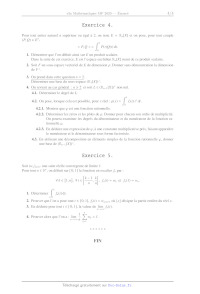

If you, for example, think the fourth dimension as time, you could trace your hyperplane's movements through time inside a video. letting $x_4=c$, visualizing $w_1x_1+w_2x_2+w_3x_3=b-w_4c$ and by changing $x_4$, you could trace how this hyper-plane move through the 4D space. Un sous-espace de dimension 1 est isotrope, un hyperplan est co-isotrope. The drawback is that the dimension of transformed data may be much larger than the original data memory required to store the features and cost of taking the product to compute the gradient. However, you can visualize some cuts through the 4D space, e.g. de Fresnel en dimension infinie), une voie intermdiaire existe cest ltude. Line borders are meaningful inside a 2D plane, and plane borders are meaningful inside a 3D space. If you have blue stripe around your accessible stall per Option 2 (CBC 11B-502.6.4.2), just make sure it gets painted in the centerline of the left edge of the stall. A hyperplane is n-1 dimensional by definition. For example, you don't visualize lines in 1D, and planes in 2D. First of all, I think the way you frame the question is confusing. I think, trying to visualize it directly in 3D doesn't make sense, because $n$ dimensional hyperplanes are visualized in $n+1$ dimensions. If you are seeking for a 3D hyperplane, which is a 3D shape with non-zero/infinite volume, it can easily be defined with four coordinates as follows: $w_1x_1+w_2x_2+w_3x_3+w_4x_4=b$, since the data lies in 4D. In 2D, this becomes $w_1x_1+w_2x_2=b$, which is a line equation. Imagine that instead of standing in a real Euclidean space, the artist is standing in a complex Euclidean space C n+1 (which has real dimension 2n+2) and the landscape is a complex hyperplane (of real dimension. Let A be a non-empty closed and bounded set in a conjugate Banach space X having property (e) and let u £ X K, whereF K w-cco A. To describe the complex projective space in an analogous manner requires a generalization of the idea of vector, line, and direction.

That is, there is no restriction on the scalar anymore in the above condition. This splits the plane into 2 regions of infinite volume. For 1-D, we'll have $wx+b=0 \rightarrow x=-b/w$, a point. K and therefore a hyperplane T exists satisfying the conclusion of the lemma. Subspaces and affine sets, such as lines, planes and higher-dimensional ‘‘flat’’ sets, are obviously convex, as they contain the entire line passing through any two points, not just the line segment. When thinking of a classification problem with one dimensional features, where the aim is to create a classifier h(x), we can imagine the separating hyperplane to be a line that separates 2 classes. So, you should think accordingly and rephrase your question again.Ī general equation for hyperplanes is $w^Tx+b=0$. That is why in 1D it is point, in 2D it is line, in 3D it is plane etc., as pointed out in the comments. soit disjoint dun hyperplan de E (pouvant dpendre de x). (1) If V F is any vector space and 0 f V is any (non-zero) linear functional, then f is always onto. Croissance des fonctions plurisousharmoniques en dimension infinie. You can write the solution in term of x 1, x 2,, x n 1. Wolfram Language & System Documentation Center.If your data lies $n$-dimensional space, hyperplanes will be $n-1$ dimensional. de Nash ainsi que ses gndralisations en dimension infinie de T. Minima locaux, fonctions marginales et hyperplans sparants dans loptimisation. "InfinitePlane." Wolfram Language & System Documentation Center. Wolfram Research (2014), InfinitePlane, Wolfram Language function, (updated 2016). Cite this as: Wolfram Research (2014), InfinitePlane, Wolfram Language function, (updated 2016).


 0 kommentar(er)
0 kommentar(er)
